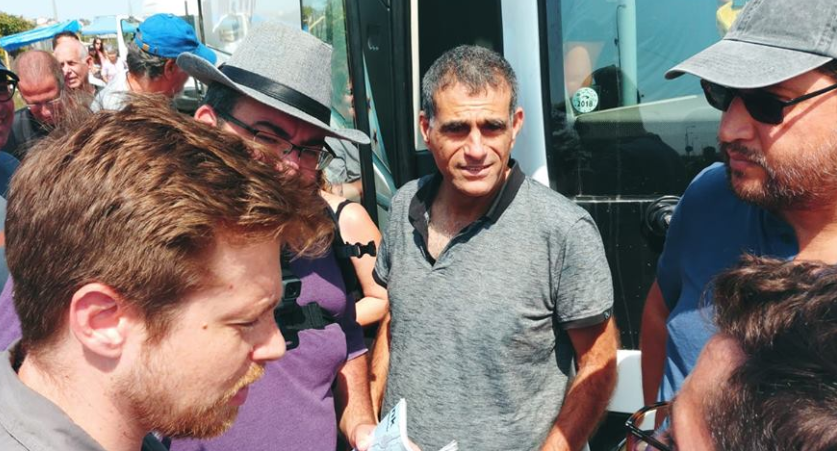So what happened exactly?
As we made our way to the Hebron area, we were stopped by security forces, who issued a “reduction order” (that is, an official order whose goal is to decrease the number of people in a given area), intended to prevent our tours from taking place. We soon realized that the order applied not only to our buses traveling to the South Hebron Hills. It also affected another one of our buses heading to a tour in the city of Hebron (which was coordinated, as always, with the necessary authorities) and an additional bus of another organization, All That’s Left, which was on its way to Umm il-Kheir. Because of this, and since this type of order is incredibly rare, we are left to assume that the order was meant to reduce the movement and presence of leftists alone.
After we spoke with the security forces and convinced them that there was no justification for issuing such an order, each bus was permitted to proceed, and the tour to Hebron continued as planned. The tour to the South Hebron Hills continued on to a visit in Susya with Nasser Nawaj'a, a resident of the village, and from there we headed to the lookout point next near Mitzpe Yair - the same spot where activists from Taayush were violently attacked the previous week. This lookout point has been a regular feature of our tours for many years, and since we had been in touch with the brigade and had not been told at any stage that our route needed to be changed, we continued in that direction as part of our usual path.
As we drove up the road leading to the outpost, we were blocked by a Border Police jeep. Within minutes, we were presented with a “closed military zone” order, signed by the brigade commander. We were given one minute to evacuate a group of 120 participants, some of whom weren't so young. When we asked for more time to get everyone on the buses, the arrests started. | 













